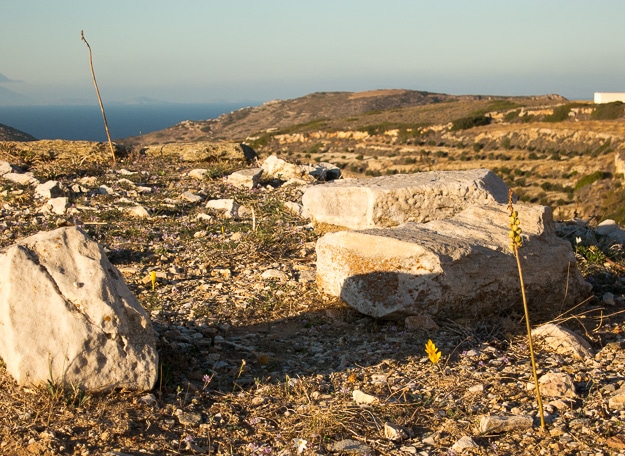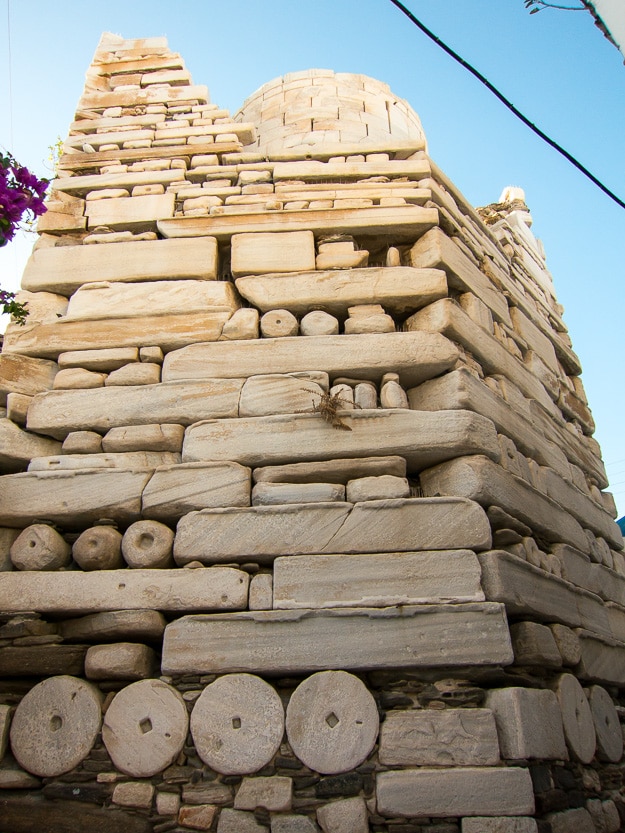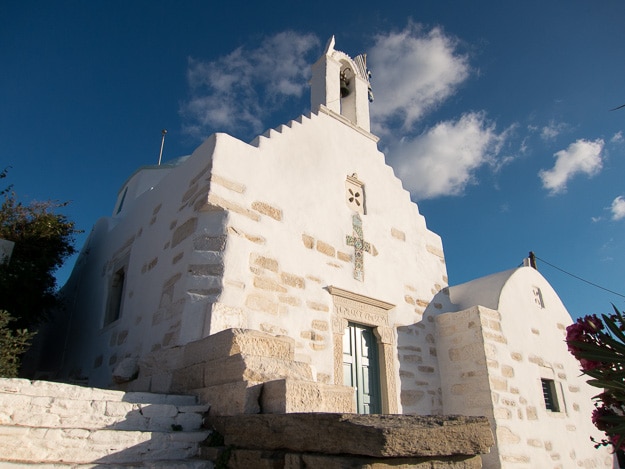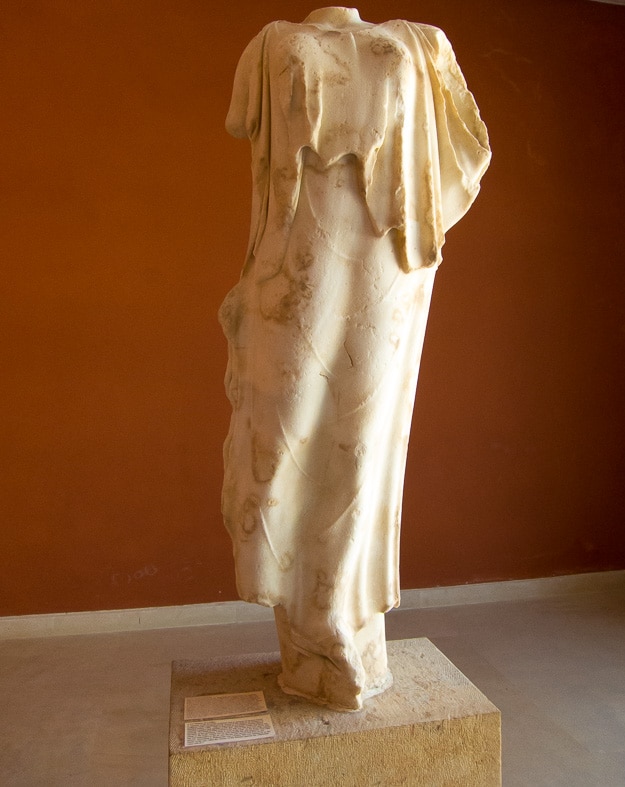
Paros is a good choice for many other reasons. It has beaches. It is big enough to have a handful of good-sized towns. It’s home to the famous white Paros marble, used over thousands of years to commemorate Greek gods and goddesses like Apollo, Artemis, and Athena, and later for Napoleon’s tomb in Paris. Seafood is a dietary staple, along with the ubiquitous Greek Salad (what could possibly go wrong?), and the cultural fluctuations resulting from former Turkish and Italian influence can be tasted up and down restaurant rows.
Most of our three days were spent in Parikia, the port and principal town of Paros. It's a cheery town spread along the harbor, surrounded by more white homes scattered up the hills and around the bay. Before knowing the town's attractions or even which way was up, a stroll took us to the oldest section. The narrow streets make it nearly impossible to view the layers upon layers of historic buildings, but offered good protection from the wind.

As we found our way home, we discovered Our Lady of the Hundred Doors, a church and convent just off the central square which opens to the port and ferry docks. The layers here start with the 4th Century baptistry, and rise through the Orthodox Church and the museum of Byzantine relics. It was a discreet visit; a service was in progress, but we could take in the chanting, incense, views, and kissing of relics from the women's section up in the balcony.

To see more of the island (an oval shape about 15 by 20 kilometers) we rented a car and drove to Lefkes for a lovely view of a terraced valley falling to the eastern shore. To the north we skirted Naoussa, home to the Moraitico Winery and a well-protected beach and resort area.
With time running short before dark, I was talked down from scampering up the rocks of the Mycenean Akropolis. All I know is that settlements of 13th and 10th Centuries B.C. were arranged up there. Maybe one can distinguish the former organized rock formations from the gorgeous natural formations, not too difficult to climb.
Last stop was the Sanctuary of Apollo and Artemis, high up on a rocky hill (aren’t they all?) on the northwest side of the island. The ruins, mostly rubble with a hint of foundations, face Delos, the island where Apollo was born. Without the view, the rocks aren’t much to look at. But when you stand on the hill among the temple stones, it’s easy to imagine the imposing structure and the impression it must have had on approaching seamen, not to mention on the Gods themselves, who surely must have been pleased.

For our stay on Paros, we booked into Pension Sofia with only a day’s notice. Such a last minute booking would probably be impossible in high season, but this October weekend we were lucky. Though our room was small and the mattresses hard, we enjoyed a balcony, clear air, a gorgeous garden that smelled of basil and flowers, al fresco breakfasts, and inviting garden corners that allowed us to linger around as much as we wanted. Hosts Sofia and Manuel do it right.
Every meal was fine and friendly. Fresh Greek salads, vegetarian moussaka, lamb, and calamari were our go-to meals.
Bon Appetit – a casual and inexpensive traditional Greek grill. We appreciated that they let us in late our first evening.
Elaea – also near the port, with nice wine selection
Ephesus – with middle Eastern influence, and pizza
Flora Tavern – fresh food and good view, overlooking Lefkes
Up Your Travel Skills
Looking to book your next trip? Use these resources that are tried and tested by us. First, to get our best travel tips, sign up for our email newsletter. Then, be sure to start your reading with our Resources Page where we highlight all the great travel companies and products that we trust. Travel Accessories: Check out our list of all the accessories we carry to make getting there and being there a lot easier. Credit Cards: See our detailed post on how to choose the right travel rewards credit card for you. Flights: Start finding the very best flight deals by subscribing to Thrifty Traveler. Book your Hotel: Find the best prices on hotels with Booking.com. See all of the gear and books we like in one place on our Amazon shop.Got a comment on this post? Join the conversation on Facebook, Instagram, or Threads and share your thoughts!


Comments are closed.